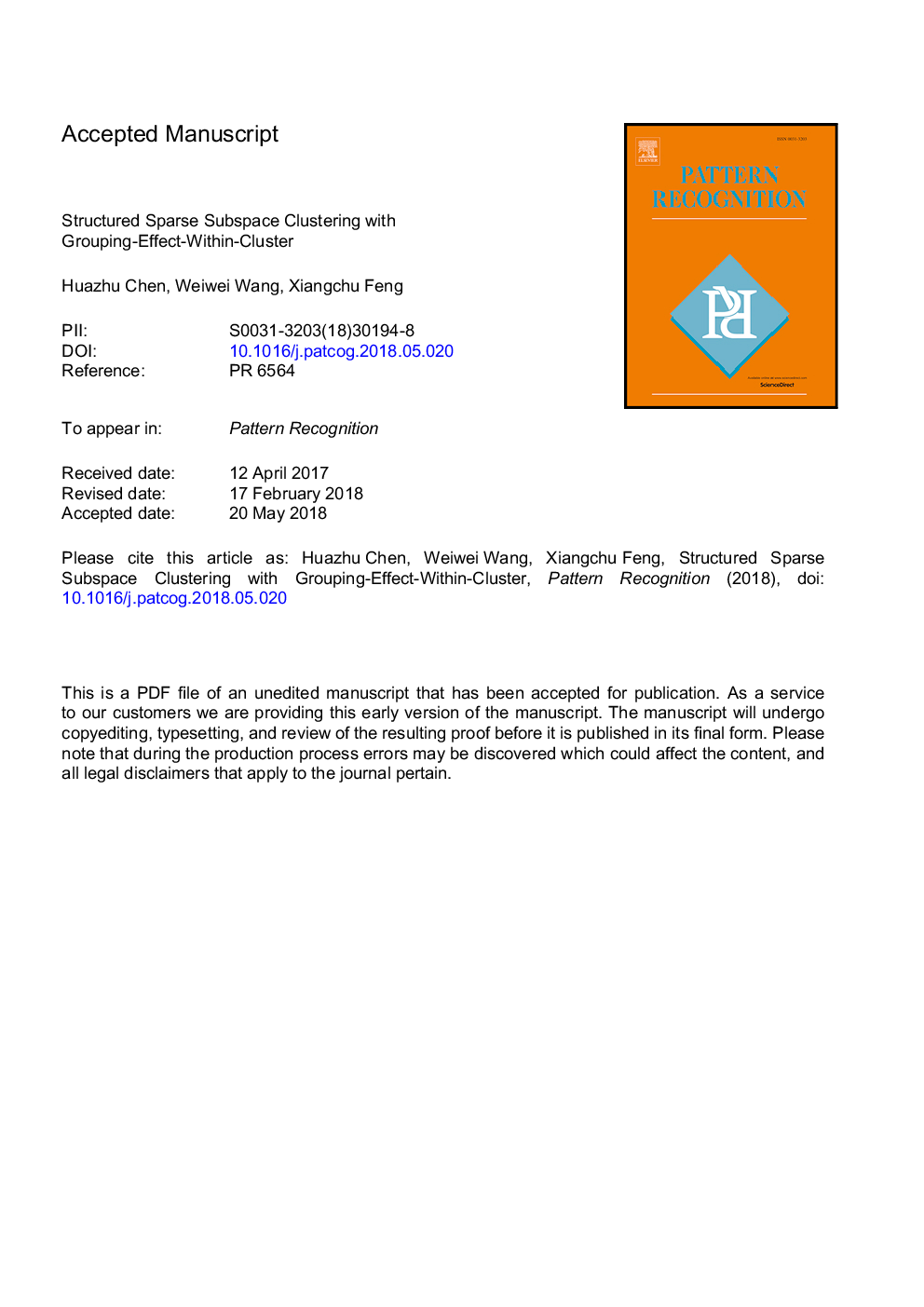| Article ID | Journal | Published Year | Pages | File Type |
|---|---|---|---|---|
| 6938697 | Pattern Recognition | 2018 | 33 Pages |
Abstract
Many high-dimensional data in computer vision essentially lie in multiple low-dimensional subspaces. Recently developed subspace clustering methods have shown good effectiveness in recovering the underlying low-dimensional subspace structure of high-dimensional data. The state-of-the-art methods show that sparseness and grouping effect of the affinity matrix are important for subspace clustering. The Structured Sparse Subspace Clustering (SSSC) model is a unified optimization framework for learning both the self-representation of the data and their subspace segmentation. But the SSSC only considers structured sparseness property of the affinity matrix. In this work, we define a concept of grouping-effect-within-cluster (GEWC) to group data from the same subspace together. Based on GEWC, we design a new regularization term coupling the self-representation matrix and the segmentation matrix. The new regularization term interactively enforces both to have the expected properties: the segmentation matrix enforces the self-representation coefficient vectors to have large cosine similarity, or GEWC, whenever the data points are drawn from the same subspace and they have the same cluster labels. On the other hand, the self-representation matrix enforces data to have the same cluster labels whenever their self-representation coefficient vectors have large cosine similarity. Incorporating the new penalty into the SSSC model, we present a new unified minimization framework for affinity learning and subspace clustering. The new model considers not only structured sparseness but also GEWC. Experimental results on several commonly used datasets demonstrate that our method outperforms other state-of-the-art methods in revealing the subspace structure of high-dimensional data.
Keywords
Related Topics
Physical Sciences and Engineering
Computer Science
Computer Vision and Pattern Recognition
Authors
Huazhu Chen, Weiwei Wang, Xiangchu Feng,
